Carisbrooke Castle is a Motte and Bailey castle that can be found in Carisbrooke, standing proudly above Newport on the Isle of Wight.
Growing up on the Isle of wight we loved a day trip to the castle and my earliest memories of Carisbrooke Castle are, of course seeing the Donkeys, the Donkeys have been a part of Carisbrooke Castle for hundreds of years helping to draw water up from the historically deep well.
The Castle is in really good condition and dates back to the Anglo- Saxon times, it’s now run by English Heritage.
It’s a great place to spend the day wandering around the castle and learning all about its history, take in the stunning views from the battlements and the keep, take a look around the museum and enjoy a lovely bit of cake from their cafe.
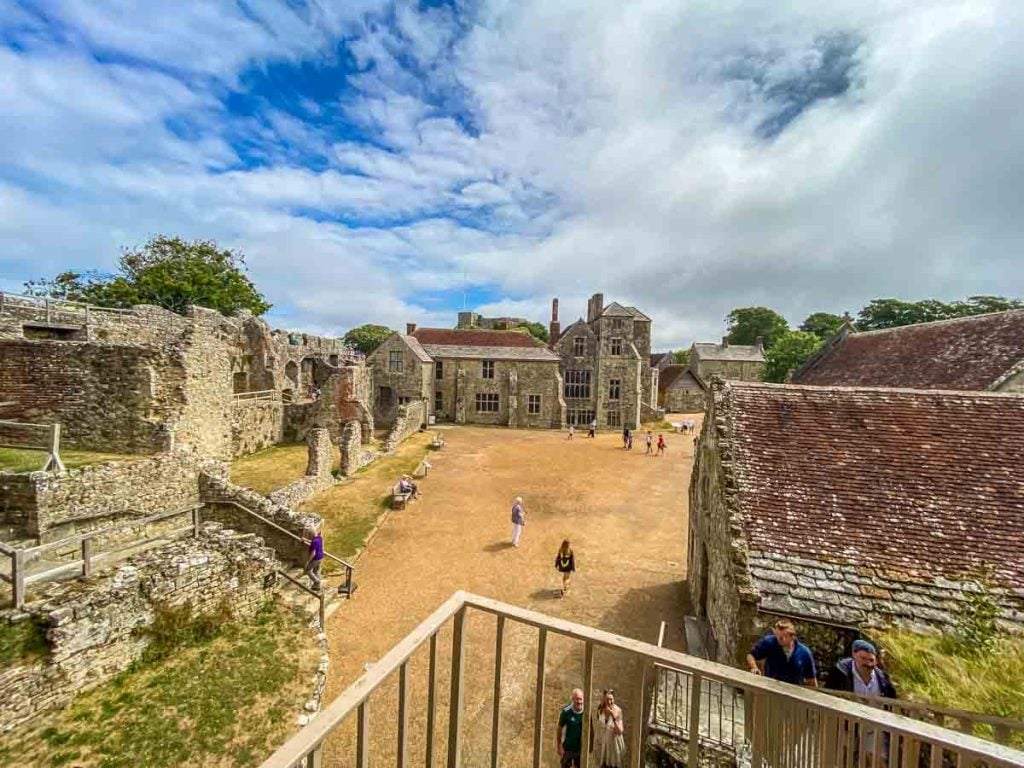
In this guide, I’ll share the fascinating history of this famous castle, what you can’t miss when you’re there, and all the practical tips you need to plan your own perfect visit.
Carisbrooke Castle: Essential Information for Your Visit
A little planning goes a long way to making your day at the castle perfect. Here’s all the practical information you need to know before you go.
Location & Getting There
- Address: Carisbrooke Castle, Castle Hill, Newport, Isle of Wight, PO30 1XY
- By Car: There is a large pay-and-display car park located just outside the castle entrance.
- By Bus: Several Southern Vectis bus routes from Newport and across the island stop near the castle. It’s a short, but uphill, walk from the bus stop.
Opening Times
The castle is typically open daily from 10 am to 5 pm throughout the spring, summer, and early autumn. Until 4pm on a Sunday.
Important: Opening times are reduced during the winter months (usually from late October/early November). To avoid disappointment, always check the official English Heritage website for the most current opening times before you travel.
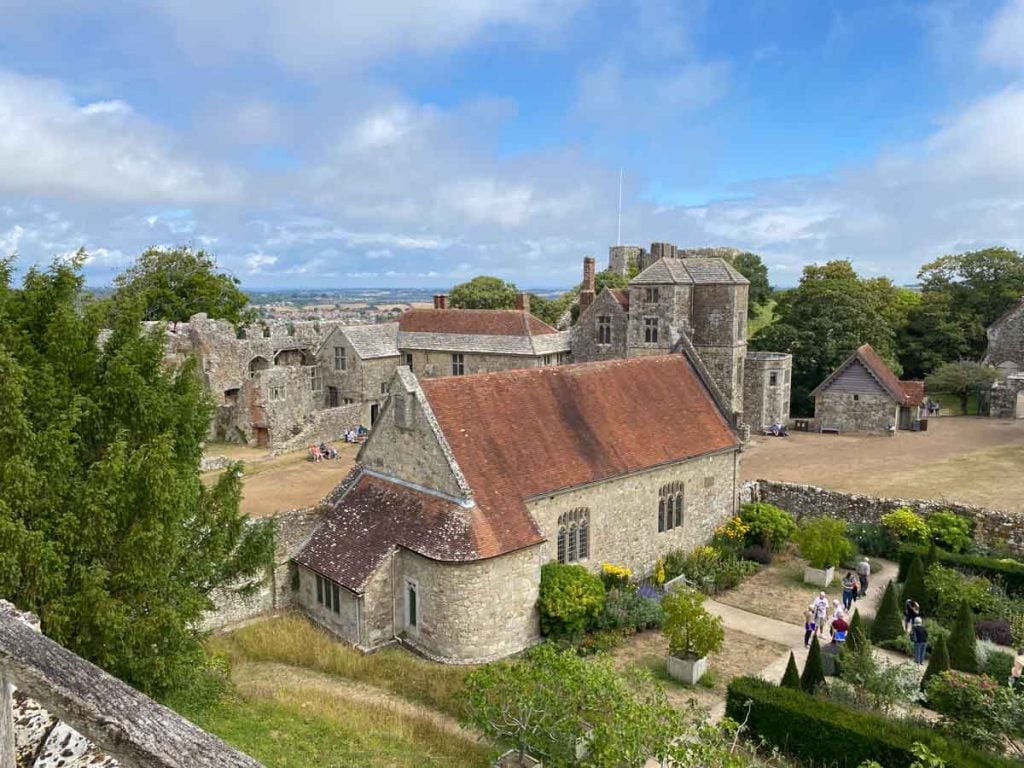
Ticket Prices & Booking
Ticket prices vary for adults, children (5-17), families, and concessions. It is often cheaper to book your tickets online in advance.
- English Heritage Members: Entry is free for members.
- Booking: Adults: £13.10, Children (5-17 years): £8.10, Family 2 Adults: £34.30 and 1 Adult: £21.20.
Facilities
- Café: The on-site café serves a selection of hot and cold meals, sandwiches, cakes, and drinks.
- Shop: There is a gift shop selling souvenirs, books, and local produce.
- Toilets: Toilets and baby changing facilities are available.
- Picnics: You are welcome to bring a picnic to enjoy in the beautiful castle grounds. There are plenty of grassy areas to sit.
Accessibility
Due to the nature of the historic site, accessibility is mixed. The lower grounds, chapel, and museum are largely accessible.
However, the wall walk involves long flights of steps, and the keep has a very steep staircase, making them unsuitable for wheelchairs and difficult for those with mobility issues. The official website has a detailed accessibility guide.
Dogs
Dogs on leads are welcome in the castle grounds but are not permitted inside the museum or café (assistance dogs are an exception).
How Long Do I Need?
To see everything without rushing, we recommend you allow at least 3 to 4 hours for your visit.
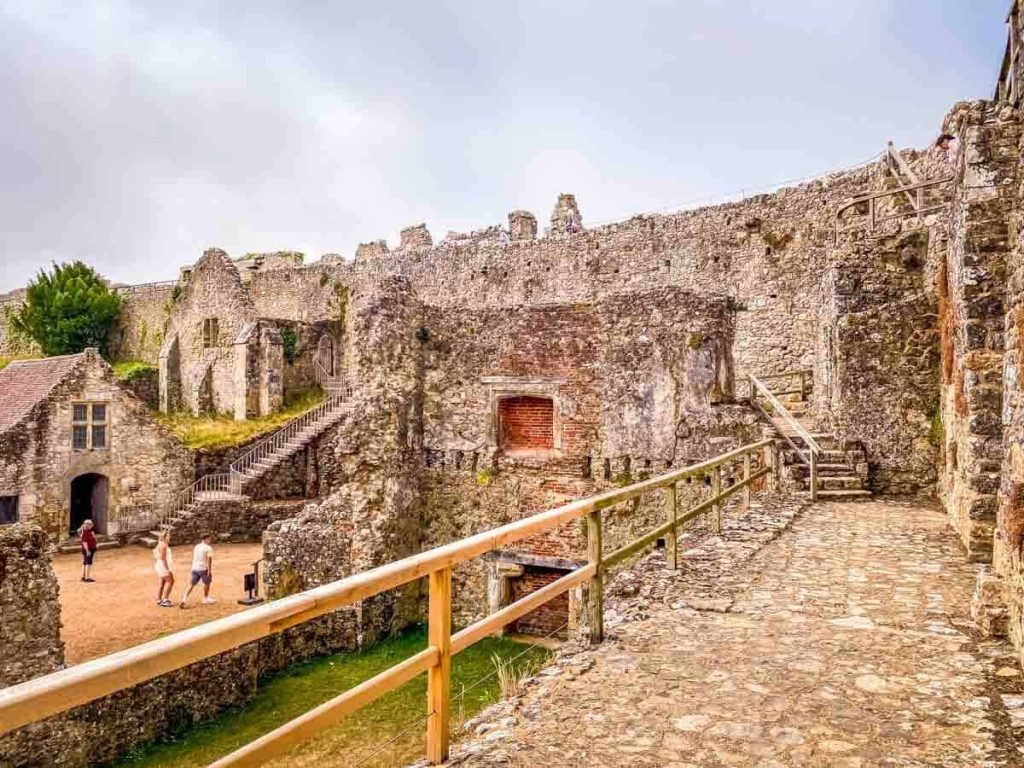
A Castle Through the Ages: The History of Carisbrooke
Carisbrooke’s story spans over 1,000 years, transforming from a simple Saxon fort into a powerful Norman stronghold, an Elizabethan mansion, a royal prison, and finally, the magnificent historic attraction we see today.
From Saxon Fort to Norman Stronghold
While a cemetery from Roman times has been found on the site, Carisbrooke’s story as a fortress truly begins in the Anglo-Saxon period.
Around the year 1000, a great earth and timber wall was built here to create a defensive burgh, a safe place to protect the islanders from frequent Viking raids.
After the Norman Conquest in 1066, the site’s strategic importance was recognised.
The Normans built a classic motte-and-bailey castle, constructing the steep-sided mound (the ‘motte’) and placing the wooden keep on top.
They enclosed the wider area (the ‘bailey’) with a stronger wall, establishing the basic layout of the castle that remains to this day.
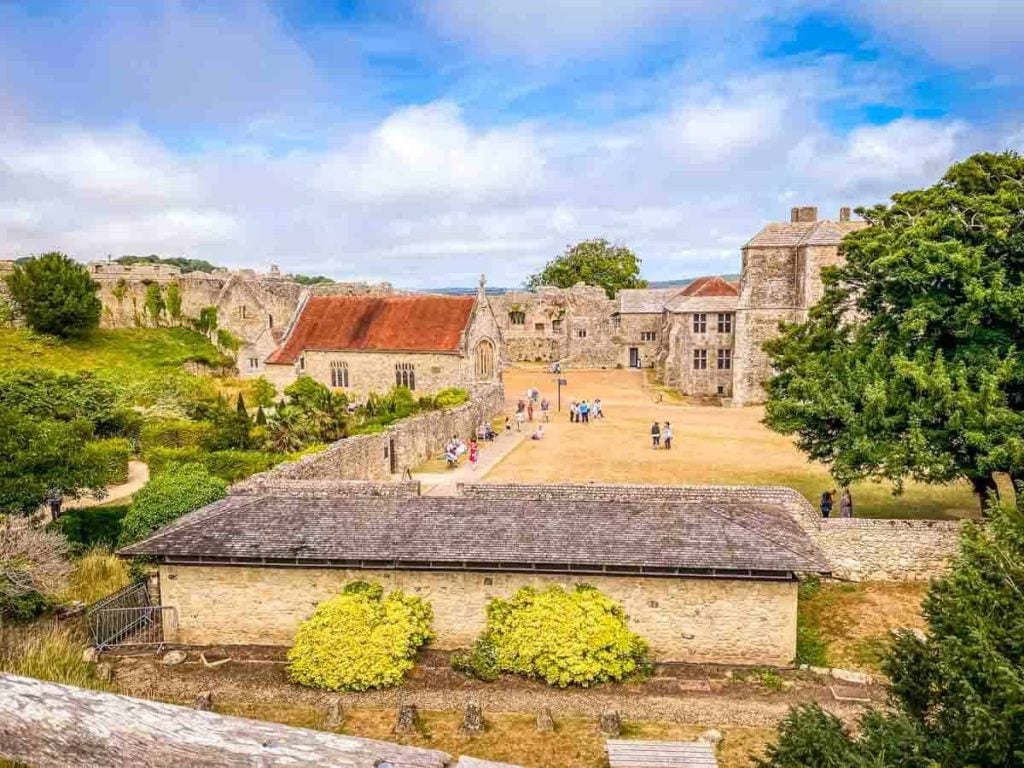
Medieval Power and French Raids
During the Middle Ages, the castle was controlled by a series of powerful lords. The most influential was Countess Isabella de Forz, who became the independent ‘Lady of the Isle of Wight’ in the 13th century.
She was a formidable ruler who treated the castle as her capital, building the magnificent stone gatehouse you still walk through today and strengthening the walls to defend the island against attacks from the French.
Tudor Decline and Elizabethan Revival
By the 16th century, the nature of warfare was changing. Henry VIII built new artillery forts along the coast, and Carisbrooke, set inland, fell into a period of decline.
Its fortunes were revived in 1583 when Sir George Carey, a cousin of Queen Elizabeth I, became Captain of the Island. He embarked on a lavish building programme to transform the aging fortress into a grand Elizabethan residence fit for royalty.
He improved the chapel and built a magnificent new range of living quarters. At the same time, he understood the threat from cannons and modernised the defences, building the outer artillery fort which was completed in 1602.
A Royal Residence and Modern Museum
After its role in the Civil War (imprisoning King Charles I), the castle was used less frequently. In 1856, it was taken over by the Office of Works, and its journey towards becoming a tourist attraction began.
Its modern story is shaped by another royal, Princess Beatrice, Queen Victoria’s youngest daughter. She was appointed Governor of the Isle of Wight in 1896 and made the castle her summer home from 1913. If you’re interested in her royal heritage, a visit to her mother’s magnificent palace, Osborne House, is an absolute must.
Passionate about island history, she founded the Carisbrooke Castle Museum in 1898 – the first of its kind on the island.
After her death, the castle was entrusted to the nation in 1944 and is now under the expert care of English Heritage, ensuring its incredible story can be enjoyed by everyone.
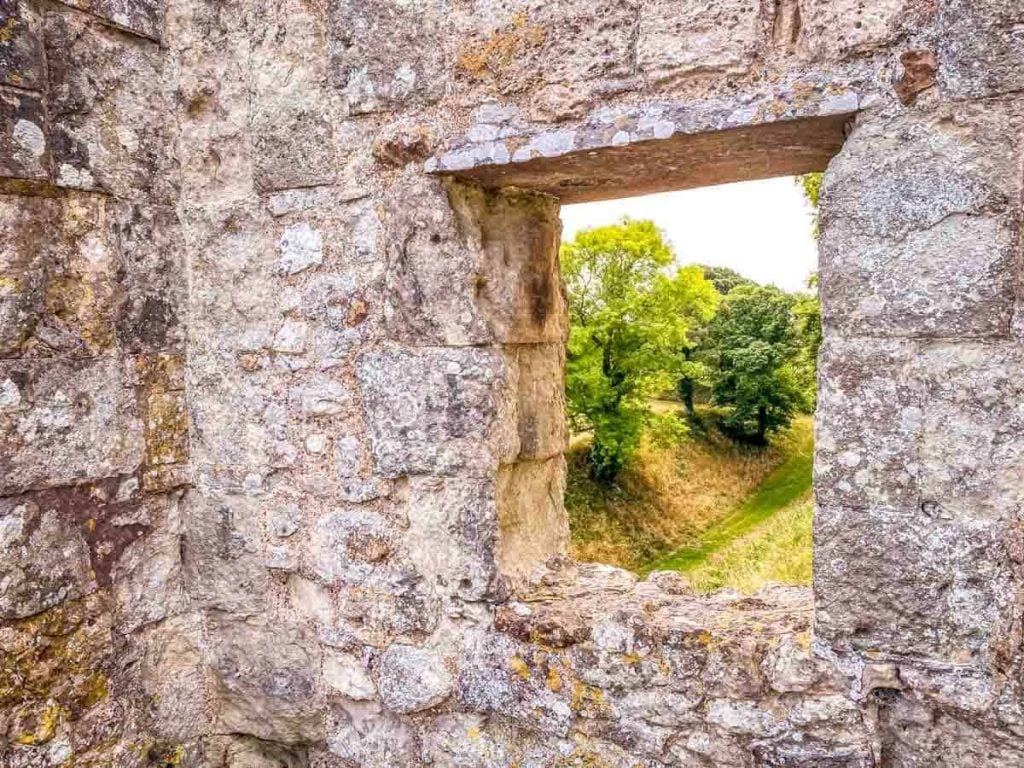
The story of Carisbrooke’s defences evolving over the centuries is fascinating. If you love exploring formidable English fortresses, another favourite of mine is the incredible Dover Castle, with its secret wartime tunnels.
The Royal Prisoner: King Charles I at Carisbrooke
Carisbrooke Castle’s most famous resident was an unwilling one: King Charles I. Following his defeat in the English Civil War, he was brought to the castle in November 1647, where he was held prisoner for fourteen months.
This period was filled with royal routine, simmering tension, and two famously failed escape attempts.
Initially, Charles was treated with the respect due to a king. He was housed in comfortable apartments, attended by his own staff, and was even allowed to walk along the castle walls.
To provide him with some recreation, a brand-new bowling green was built on the castle grounds, a feature you can still see today.
The Escape Attempts
Despite the relative comfort, Charles was a prisoner and was determined to escape. His first attempt has become legendary.
He planned to climb out of his bedroom window at night, using a rope made of torn sheets to lower himself to the ground where supporters would be waiting.
The plan failed spectacularly when the king, having misjudged the size of the opening, got firmly wedged between the window’s iron bars. Unable to move forwards or backwards, he had to give up and signal to his attendants for help.
Undeterred, he planned a second, more elaborate escape a few months later. This time, however, he was betrayed.
As he prepared to make his move, he looked down from his window and saw extra guards patrolling below, placed there by a captor who had been tipped off. The king knew the plot was foiled and didn’t even try to leave his room.
After this second failure, his privileges were revoked, and he was moved to a more secure part of the castle. His time at Carisbrooke came to an end in late 1648 when he was taken back to London for his trial.
He was executed in January 1649, making his imprisonment at Carisbrooke the final, dramatic chapter of his reign. You can learn more about his story and see artefacts from his time there in the castle’s excellent museum.
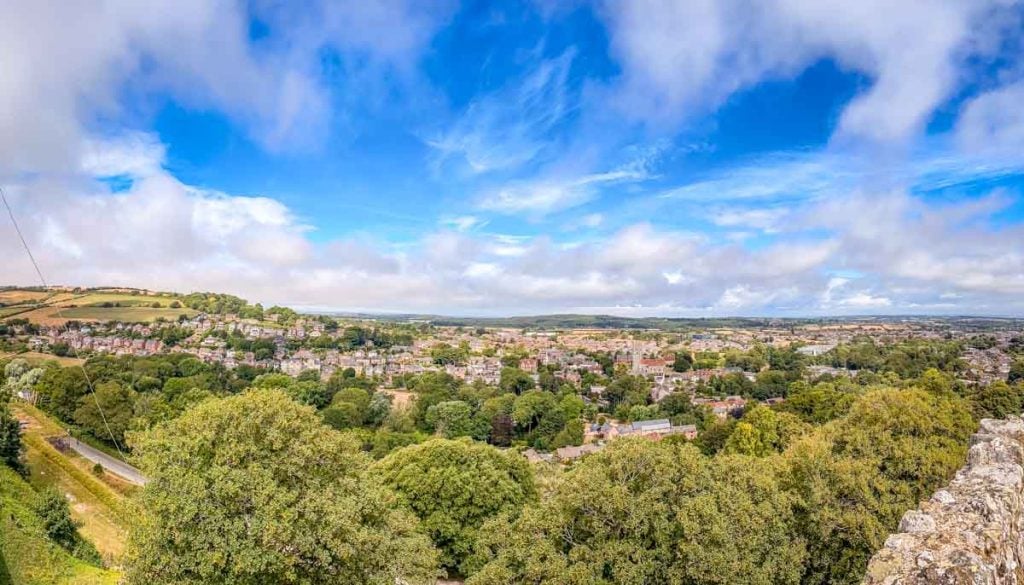
Things to See and Do at Carisbrooke Castle
Walk the Walls & Climb the Keep for Stunning Views
A visit to Carisbrooke Castle isn’t complete without a walk along its ancient battlements. It’s always a fun thing to do, especially for children, offering a real sense of adventure as you circle the grounds from above.
I must admit I’m not a fan of heights, but I did go up on the walls and wow, what incredible views of Newport and the castle grounds. My boys absolutely loved it and really enjoyed taking in the scenery and taking some photos.
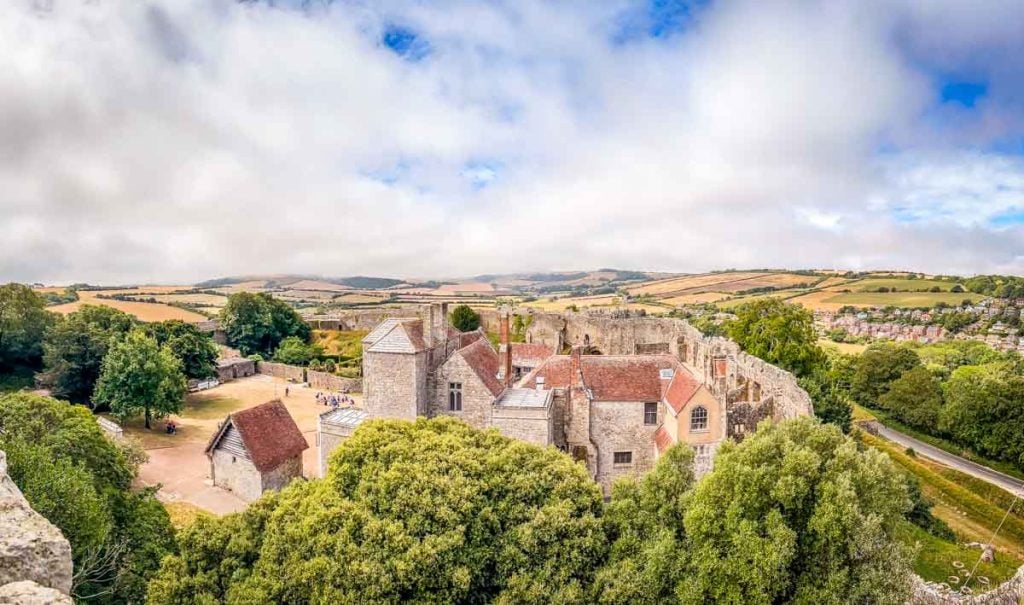
The highlight of the walk is the climb up to the Shell Keep. Built by the Normans during the 11th century, the keep sits high on a large mound (known as a motte) and is reached by a set of very steep steps. It’s a bit of a climb, but it is absolutely worth the effort.
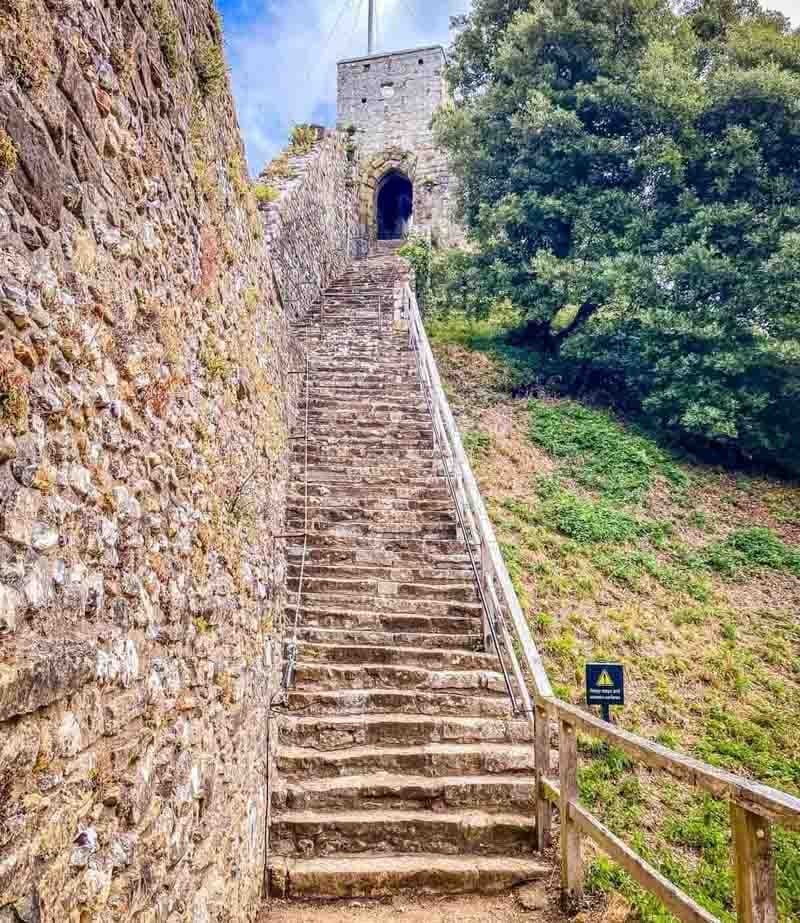
From the top, you are rewarded with spectacular, panoramic views across the castle and vast areas of the island. It’s the best vantage point in the castle and the perfect place to appreciate just how strategic this location has been for over a thousand years.
Meet the Famous Carisbrooke Donkeys
This is always my favourite part of visiting the castle. The donkeys are so cute and it’s just a real treat to see them.
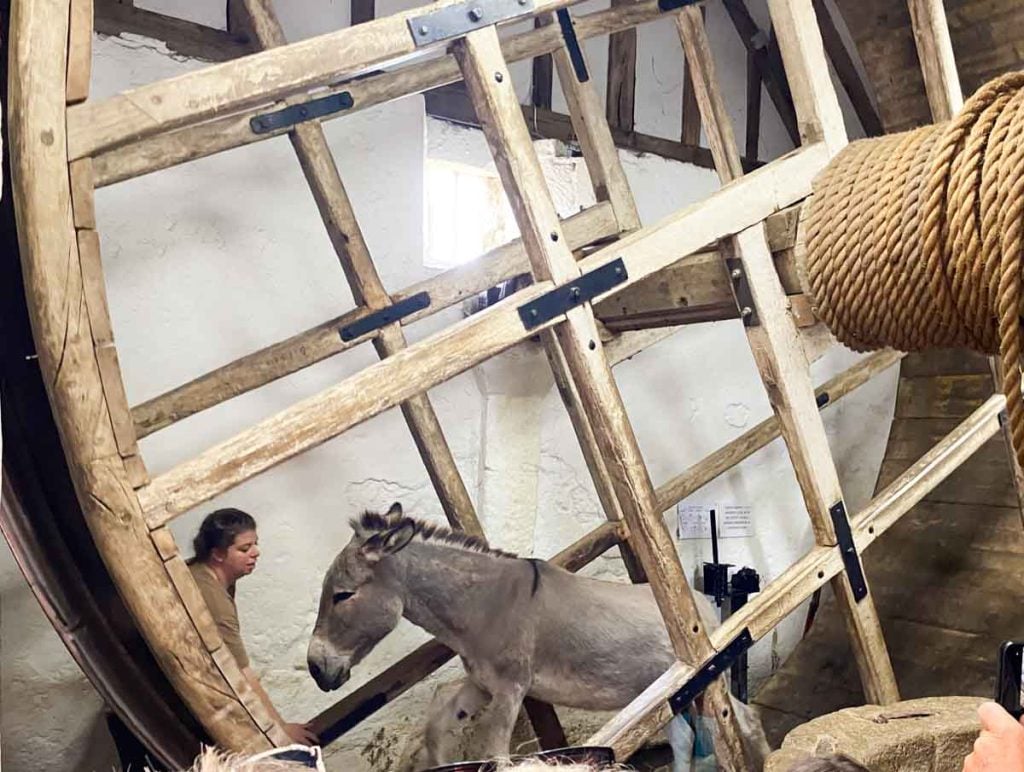
Carisbrooke is home to 4 donkeys at the moment. The donkeys used to be used all the time at the castle for bringing up the water from the well, because the well is extraordinarily deep.
Now the donkeys have a lovely time at the castle and are only used very occasionally for demonstrations.
In the well house there is a large wooden wheel that is used to bring up the water from the deep well. The donkeys walk in the wheel which then winds up the rope to bring up the water bucket.
The well is extremely deep at 49 metres and the water levels in the well are about 12 metres !! Now that’s a deep well !!
The well was originally built in 1587 and they apparently used to make prisoners walk the wheel to bring up the water and then in 1696 they started to use donkeys instead.
The donkeys are now only used on the wheel to demonstrate how the water is brought up, but they are only used for a few minutes at a time, and only if they choose to themselves.
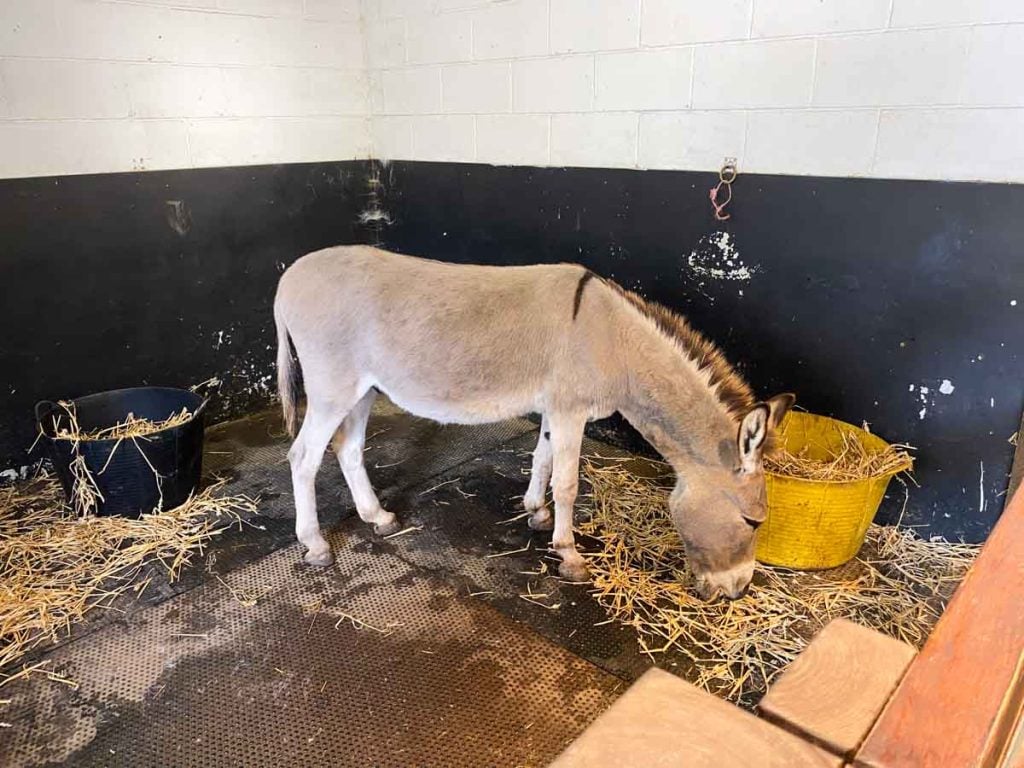
When we were there we had a demonstration from Jigsaw who was so very cute, friendly and lovely. We all had a chance to say hello to him and cheer him on. The staff there are lovely too and you can see how much the welfare of the donkeys means to them.
The donkeys all have names that start with a J and this is because Charles I always used to sign any letters that he wrote with a J, so for 150 years all the donkeys have had names which start with a J.
Jack, Jill , Jigsaw and Juno are the donkeys that are in residence at the moment. From the Donkey Sanctuary that can be found in Wroxall
Explore the Chapel and Museum
Beyond the castle walls and battlements, you can delve deeper into centuries of island history in the museum and find a moment of quiet reflection in the chapel.
The Carisbrooke Castle Museum was founded by Princess Beatrice in 1898, making it the oldest museum on the Isle of Wight.
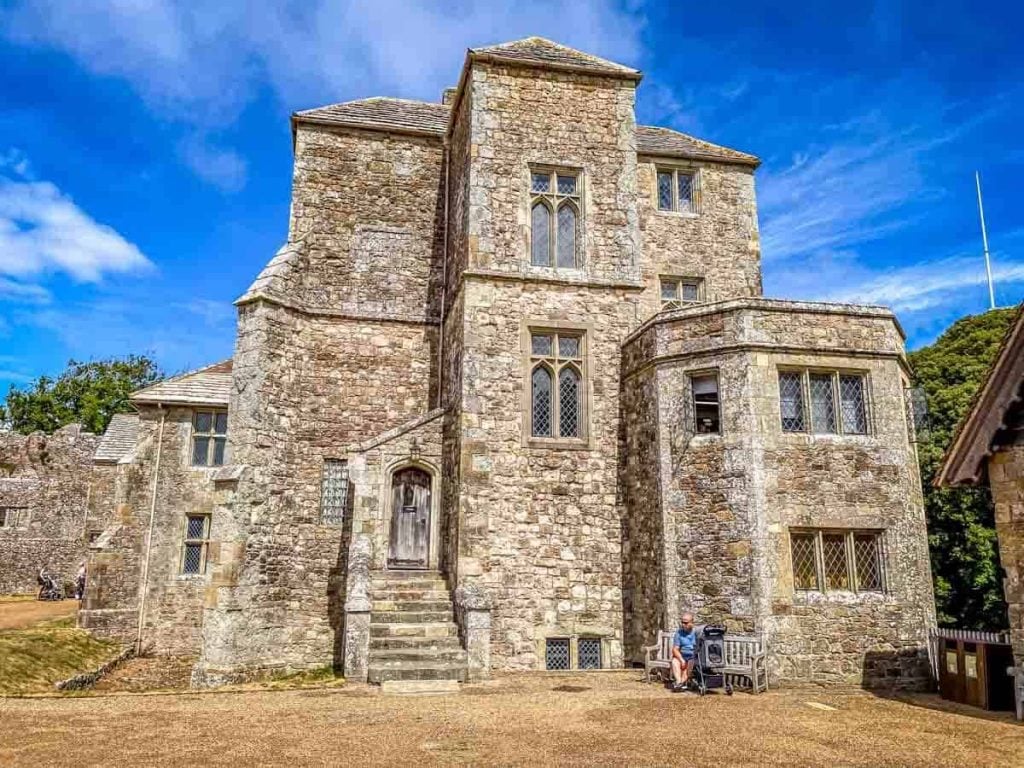
Housed within the historic Great Hall, it does more than just tell the story of the castle. Through fascinating artefacts, films, and interactive displays, you can explore the island’s rich past and see personal items belonging to King Charles I from his time as a prisoner here.
Nearby, St Nicholas’ Chapel offers a peaceful sanctuary. The current chapel was rebuilt in 1904 to commemorate the 250th anniversary of Charles I’s execution.
After the First World War, it took on a second, solemn role, being rededicated as the Isle of Wight’s County War Memorial. It’s a beautiful and poignant space to visit and pay your respects.
Relax in Princess Beatrice’s Garden
This is a beautiful sculptured garden with lots of places to sit and admire the plants, orchard, sculptures and the water features.
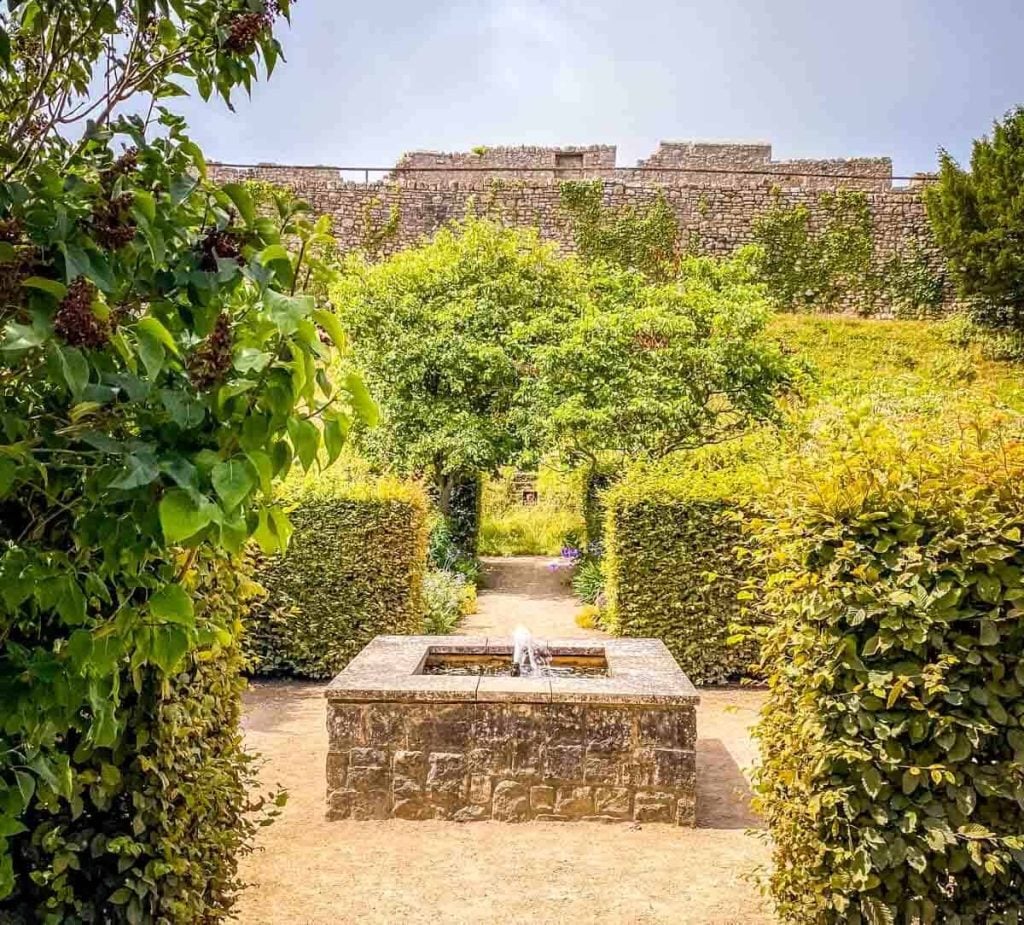
The Edwardian style garden was designed by Chris Bearshaw. There are lots of reds, blues and gold colours in the garden which are in keeping with the crest of Princess Beatrice.
It’s a lovely addition to the castle and so peaceful and tranquil.
We took time to sit and enjoy the garden and watch everyone walking around the battlements.
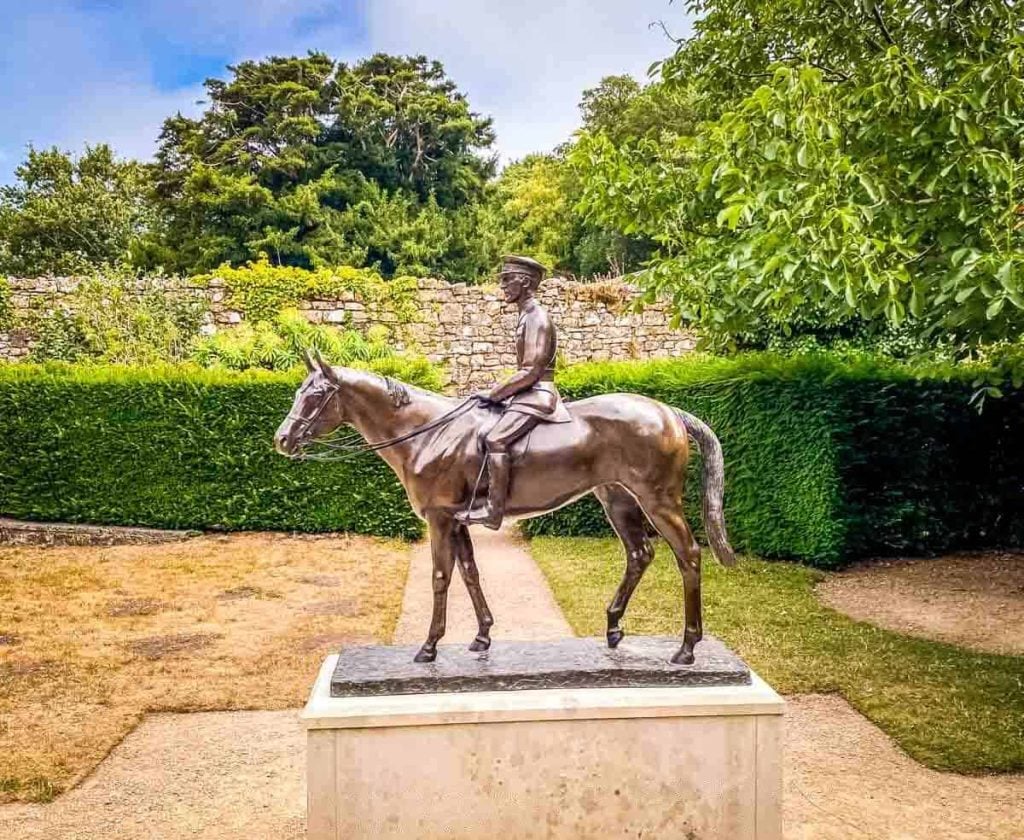
Staying at Carisbrooke Castle
You can stay over at Carisbrooke Castle in The Bowling Green Apartment, which is in the grounds of the castle.
The apartment has two bedrooms and sleeps up to 4 people. It’s on the second floor of the service block that used to be used by the gentry and it overlooks the tower and the castle walls.
You will also get a luxury hamper, entry to heritage sites and 10 percent discount in the shops and cafes whilst you are there.
It sounds perfect for a historic getaway and is definitely on my list of places to stay.
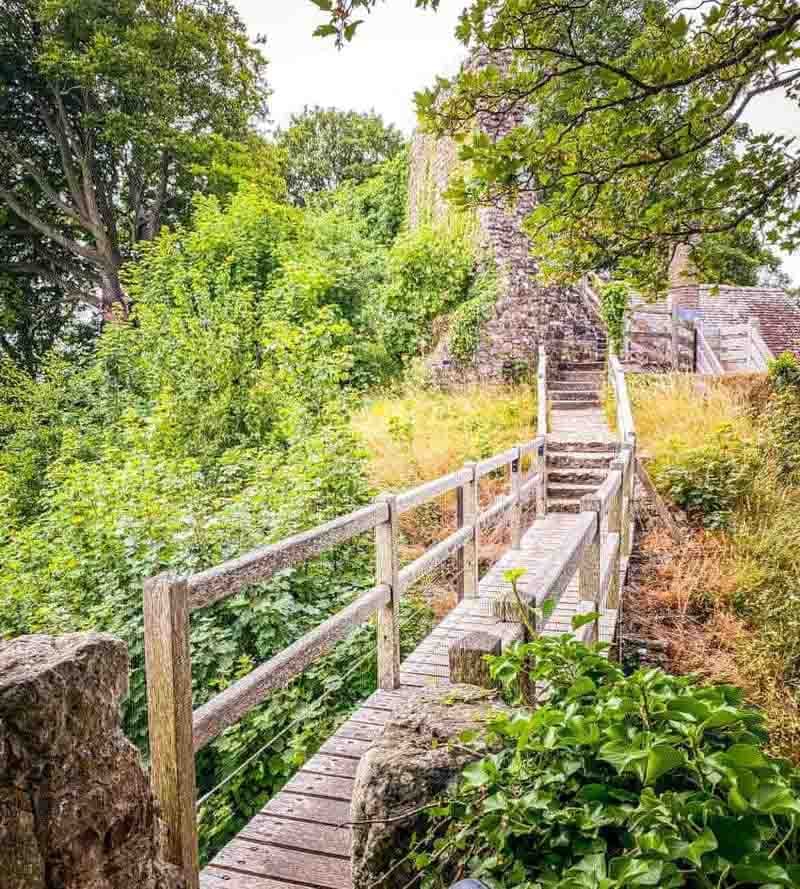
Conclusion
Carisbrooke Castle has something for everyone, It’s in great condition for a castle and has stunning grounds and is steeped in history.
The walk around the walls and the climb up to the keep are well worth doing for the panoramic views of the surrounding areas. I would recommend sensible footwear for your visit to the castle.
You can go and visit the donkeys and see the water being brought up from the well, take a look around the museum and have a lovely walk around the grounds outside.
The castle also has a lovely cafe which serves hot and cold food and of course, lovely slices of cake and a gift shop where you can buy a souvenir or two.
We loved our visit to the castle and will definitely be going back again to explore some more. There’s so much to see and do there and plenty of seating so you can sit and admire the views and the grounds.
There’s lots of interactive fun things to do for children and it really does have an incredible feel to it. A definite must see if you are heading to the Isle of Wight on holiday.
A definite must-see if you are heading to the Isle of Wight on holiday. While you’re there, make sure you don’t miss the chance to see the island’s iconic chalk stacks at The Needles.










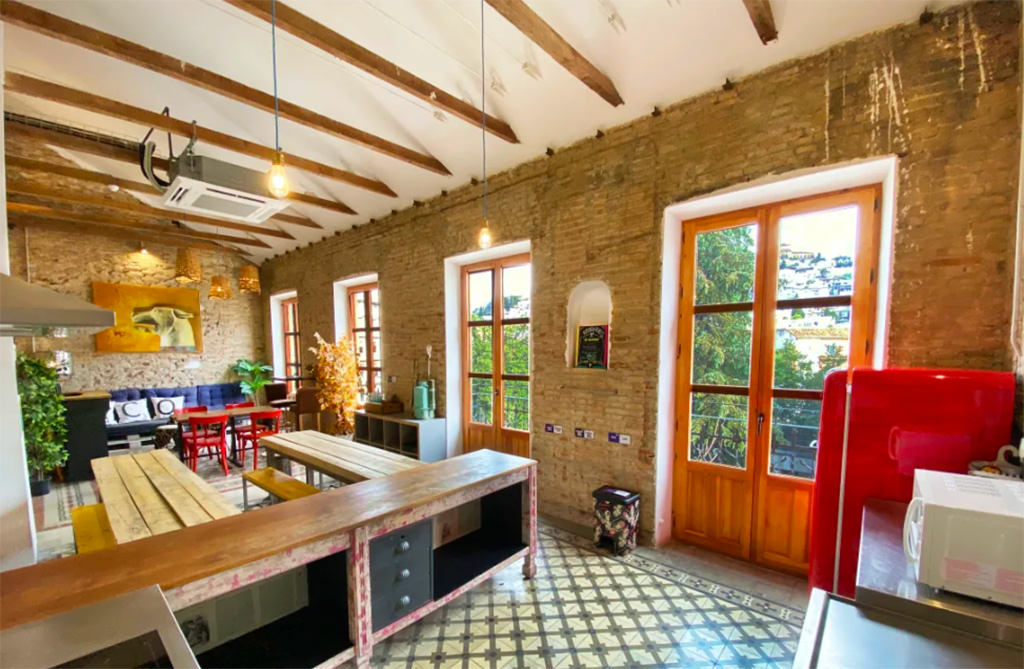

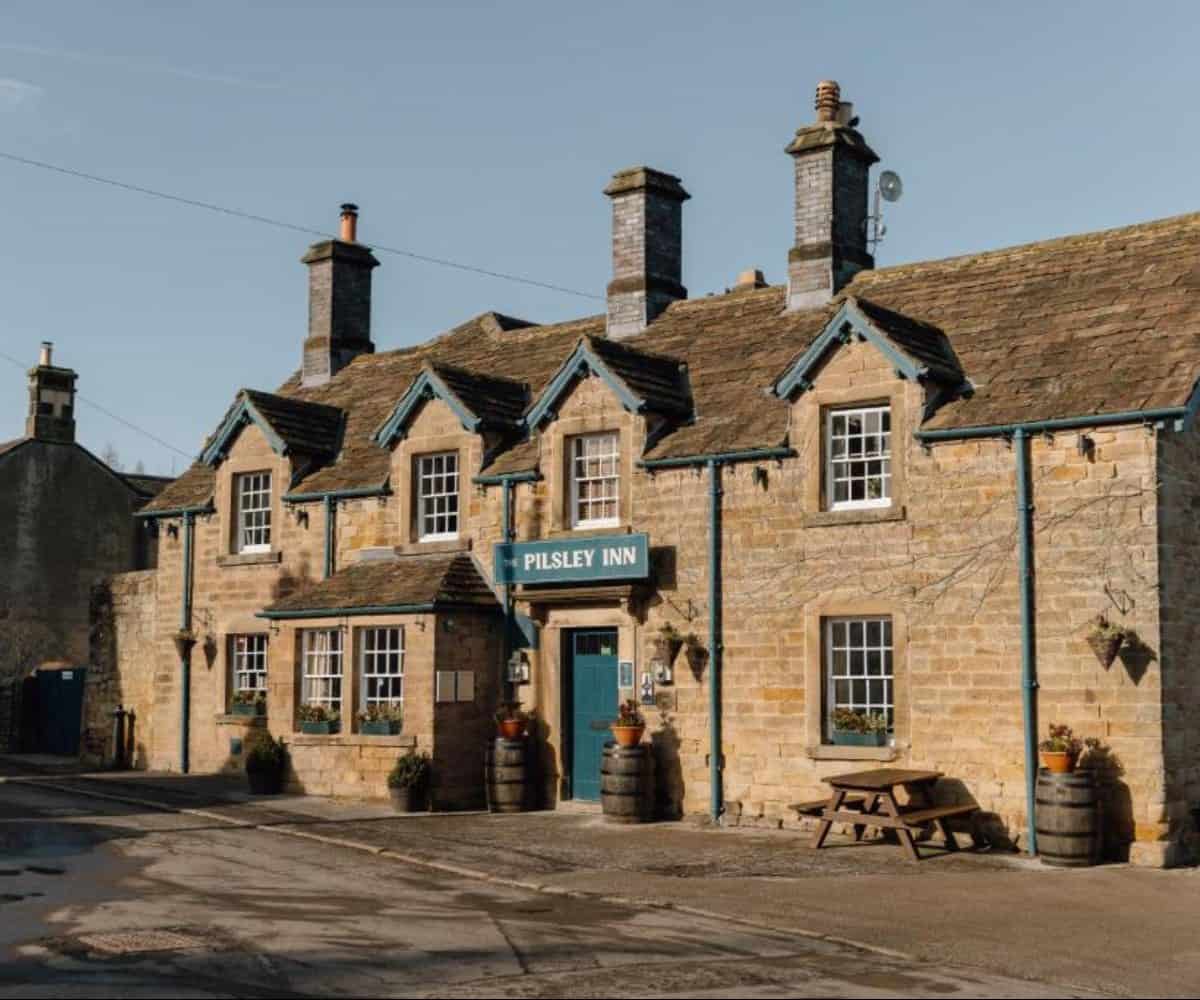
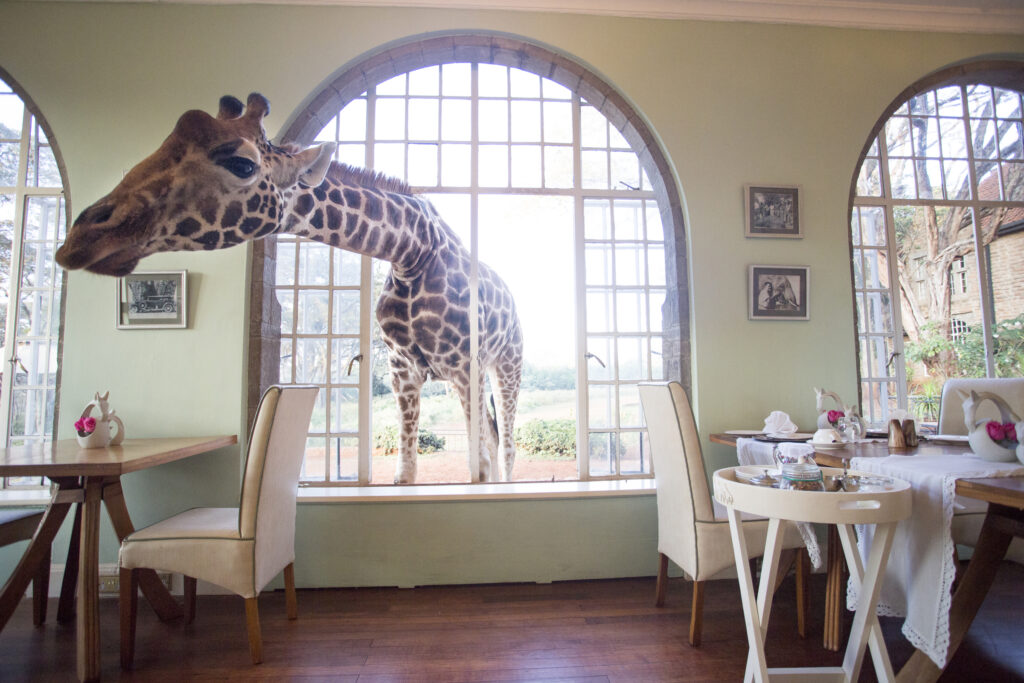




 English (US) ·
English (US) ·